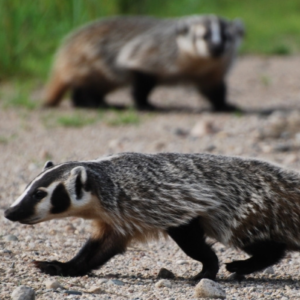
Grizzly Bear Nature Canada
This big bear only thrives in areas that aren’t disturbed by people. Yet, the biggest threat facing Grizzlies today are their interactions with humans. Save endangered species today by joining one of our campaigns! Help End the Extinction
Vital Signs
- Common name: Grizzly Bear
- Latin name: Urus Arctos
- Conservation Status: Special Concern
- Range: Northwest territories, Nunavut, Yukon, British Columbia, Manitoba, Alberta, Saskatchewan
- Lifespan: 20-30 years
- Size: females are 100-150 kg in weight, males are 180-270 kg

Grizzly Bears come in a variety of colours. They can be brown, white, yellow-white, or even black! They have a hump over their shoulders, which is caused by the large muscles in the bear’s front legs. These bears often look like they weigh more than they do because of their body shape and long fur coat.
Grizzly Bear Facts
- Is a solitary animal
- Babies are very small, weighing only 4 kg when born
- Though it’s considered the second largest land carnivore in North America, plants make up the majority of its diet
- In the spring, they spend a lot of time in meadows or near avalanche slides to eat the freshly grown plants
- They aren’t true hibernators. In fact, they can be active (if lethargic) for the whole winter

Threats
One of the biggest threats to the Grizzly Bear is people. Grizzly Bears have not thrived through human development. They are often killed by people who are defending themselves or their property, by collisions with vehicles, by those who mistake them for legal game during a hunt, and by those hunting illegally.
Another threat is loss and changes to habitat. For Grizzly Bears, this is caused by the collection of natural resources like oil, gas, coal, diamonds, and wood. Agricultural development has limited the bear’s habitat, too.
What’s Being Done
There are many protected areas that overlap with the natural range of Grizzly Bears in Canada. This includes 15 national parks.
The Grizzly Bear is also protected by hunting regulations in British Columbia and the Yukon. In Alberta, Grizzly Bear hunting is now illegal with the exception of Aboriginal subsistence hunting.

Canada has committed to the goal of protecting 30% of lands, ocean, and freshwater in Canada by 2030. This goal will help protect ecosystems, restore habitats, and fight climate change. All these things are a step in protecting Canada’s at-risk animals—so let’s hold the federal government to their promise.
How to Help
- Help Out: Ask your local provincial or territorial MP to support stiff Grizzly Bear hunting restrictions in your area.
- Learn: Stay informed about endangered species by signing up for Nature Canada’s monthly e-newsletter.
- Take Precautions: Purchase bear-resistant trash cans and electric fences if you live near or in rural areas. You can also educate yourself on bear safety and what to do if you encounter a bear in the wild.
- Find out more: Help us end the extinction by taking action for nature today—visit conservation websites like Nature Canada or join one of our campaigns!
Resources
- COSEWIC – Assessment and Report
- Hinterland – Who’s Who: Grizzly Bear
- SARA – Species Profile
Originally drafted by volunteer Claire Smith. Updated in July 2022 by Simona Casale.
Want to Help?
Hello nature life wilderness is the world’s envy. It’s our duty to keep our true north strong and green.
Donate

